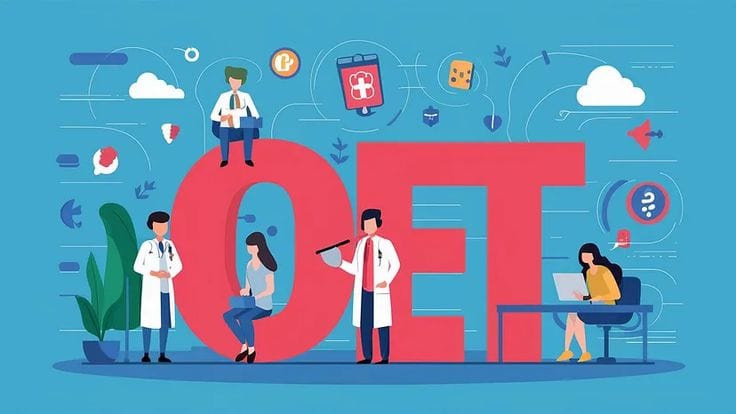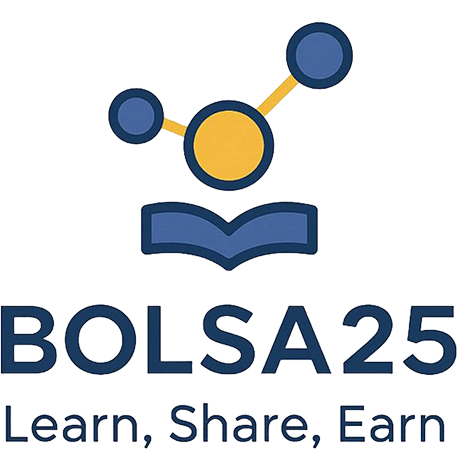For healthcare professionals aspiring to work in an English-speaking environment, demonstrating exceptional language proficiency is not just a requirement—it’s a cornerstone of providing safe and effective patient care. The Occupational English Test (OET) is designed specifically for this purpose, assessing the communication skills of healthcare practitioners in real-world clinical contexts. This comprehensive guide will walk you through every aspect of the OET exam, from its structure and benefits to proven preparation strategies. At Bolsa25 Academy, we understand that success in high-stakes exams like the OET comes from building genuine communicative confidence. Our live, conversation-focused courses are tailored to help you master the practical English skills you need, not just to pass the test, but to excel in your international healthcare career.

Who should take the OET Exam?
The Occupational English Test, or OET exam, is not a general English test. It is a highly specialized language assessment created for healthcare professionals. If you are qualified in one of the designated professions and aim to register and practice in an English-speaking country, the OET is the most relevant choice for you. Its content directly mirrors the communication tasks you will perform daily in a healthcare setting, making your preparation both practical and directly applicable to your career.
The OET is specifically designed for the following 12 healthcare professions:
- Dentistry
- Dietetics
- Medicine
- Nursing
- Occupational Therapy
- Optometry
- Pharmacy
- Physiotherapy
- Podiatry
- Radiography
- Speech Pathology
- Veterinary Science
Professionals in these fields who wish to work or study in countries such as the United States, the United Kingdom, Australia, New Zealand, Ireland, Singapore, and Dubai will find that the OET is recognized and often preferred by healthcare regulatory bodies, councils, and universities. The test validates your ability to communicate effectively with patients, colleagues, and specialists, ensuring you meet the high standards of safety and care required in these countries. Unlike general English exams that cover a wide range of academic or social topics, every part of the OET examination is rooted in healthcare, allowing you to leverage your existing professional knowledge and focus solely on mastering the language of your field.
How is the OET Exam structured?
The OET exam consists of four sub-tests: Listening, Reading, Writing, and Speaking. The Listening and Reading tests are divided into three parts, covering general healthcare topics. The Writing and Speaking tests are profession-specific, with tasks designed to replicate communication scenarios from your particular field.
Structure of the OET Exam
The OET exam is meticulously structured to assess the four core language skills—Listening, Reading, Writing, and Speaking—within a healthcare context. Each sub-test is designed to simulate real-world communication scenarios that healthcare professionals encounter regularly. Understanding the format of each section is the first step toward effective preparation.
Listening section
The Listening sub-test assesses your ability to understand spoken English in various healthcare contexts. It lasts approximately 45 minutes and consists of 42 questions divided into three parts. You will hear each recording only once, requiring focused attention and strong note-taking skills.
- Part A – Consultation Extracts (approx. 5 minutes each): This part features two recorded health professional-patient consultations. You will be required to listen for specific information and complete the professional’s notes using the words or short phrases you hear from the audio. This task directly tests your ability to accurately capture patient information during a consultation.
- Part B – Short Workplace Extracts (approx. 1 minute each): You will listen to six short recordings from various healthcare workplace settings, such as team briefings, handovers, or professional-to-patient dialogues. For each extract, you must answer one multiple-choice question, testing your ability to identify the detail, gist, opinion, or purpose of the interaction.
- Part C – Presentation Extracts (approx. 5 minutes each): This part includes two longer recordings of a presentation or interview on a healthcare-related topic. You will answer six multiple-choice questions for each extract, which assesses your ability to follow and understand a detailed and extended piece of spoken discourse, including opinions and attitudes.
Reading section
The Reading sub-test is 60 minutes long and is also divided into three parts, with a total of 42 questions. It evaluates your ability to read and understand different types of texts on health-related subjects.
- Part A – Expeditious Reading Task (15 minutes): This part is a race against the clock. You are given four short texts related to a single healthcare topic and must answer 20 questions (including matching, sentence completion, and short answers) in just 15 minutes. This task assesses your ability to skim and scan quickly to locate specific information from multiple sources, a skill vital for finding information efficiently in a clinical setting.
- Part B – Careful Reading Task (45 minutes for Parts B and C combined): You will read six short texts (100-150 words each) from workplace contexts, such as policy documents, hospital guidelines, manuals, or internal communications. You will answer one multiple-choice question for each text, testing your ability to understand the main point or purpose of the document.
- Part C – Careful Reading Task: In the final part, you will read two longer texts (up to 800 words each) on topics of general healthcare interest. For each text, you must answer eight multiple-choice questions that assess your ability to comprehend detailed meaning, infer opinions, and understand the writer’s attitude.

Writing section
The Writing sub-test takes 45 minutes and is profession-specific. This means a nurse will receive a task different from that of a dentist, but the core skills assessed are the same. The task is to write a letter, which is most often a referral letter but can also be a letter of transfer or discharge. You are provided with case notes, similar to what you would find in a patient’s chart, and must use this information to compose a formal letter of about 180-200 words.
This section is a crucial part of the OET exam for nurses, doctors, and other professionals, as it directly simulates a key professional writing task. The assessment criteria include:
- Purpose: Is the reason for the letter immediately clear?
- Content: Have you included all relevant information and omitted irrelevant details?
- Conciseness & Clarity: Is the letter well-summarized and easy for the recipient to understand?
- Genre & Style: Is the tone and register appropriate for a formal medical letter?
- Organisation & Layout: Is the letter well-structured and formatted correctly?
- Language: Is your grammar, vocabulary, spelling, and punctuation accurate?
Speaking section
The Speaking sub-test takes approximately 20 minutes and is also profession-specific. It is conducted as a one-on-one session with an interlocutor. The test is designed to simulate authentic healthcare consultations. You will perform two role-plays, each lasting about five minutes. For each role-play, you will be given a card that explains the scenario and your task, while the interlocutor plays the role of a patient, a patient’s relative, or a carer. You will have three minutes to prepare for each role-play.
The entire session is recorded for assessment. The criteria focus on your clinical communication skills, not just your English proficiency. Assessors will evaluate:
- Linguistic Criteria: Intelligibility, fluency, appropriateness of language, and resources of grammar and expression.
- Clinical Communication Criteria: Relationship-building, understanding and incorporating the patient’s perspective, providing structure, information-gathering, and information-giving.
This section of the OET exam truly tests your ability to communicate with empathy, clarity, and professionalism in a clinical setting.
Benefits of the OET Exam
Choosing to take the OET exam offers significant advantages for healthcare professionals over other English proficiency tests. Because it is designed by healthcare experts for the healthcare sector, it provides a more relevant and practical assessment of the skills you will use every day. This focus translates into tangible benefits for your career and integration into a new healthcare system.
Recognition in healthcare systems
One of the primary benefits of the OET is its widespread recognition by healthcare regulatory bodies, government immigration authorities, and higher education institutions. Major destinations for healthcare professionals, including the UK, USA, Australia, New Zealand, and Ireland, accept OET results as definitive proof of English proficiency for registration, employment, and visa purposes.
Healthcare regulators trust the OET because it assesses communication skills in a clinical context, which is a direct indicator of a professional’s ability to provide safe and high-quality patient care. When a hospital or clinic sees an OET pass on your resume, they have confidence that you can handle patient consultations, understand complex medical documentation, write clear referral letters, and communicate effectively with colleagues. This specialized validation is something that general English tests cannot offer, giving OET-certified professionals a distinct edge.
Global opportunities for professionals
Passing the OET exam opens doors to a world of professional opportunities. It is your passport to advancing your career on a global stage, allowing you to work in some of the world’s most advanced healthcare systems. With an OET certification, you are not just proving your English skills; you are demonstrating your readiness to integrate seamlessly into an English-speaking healthcare environment.
Furthermore, preparing for the OET helps you build confidence. The preparation process itself is a form of professional development. You will practice communication tasks that are directly relevant to your job, such as breaking bad news, explaining a treatment plan, or taking a detailed patient history. This practice not only prepares you for the exam but also enhances your day-to-day clinical skills, making you a more effective and confident practitioner from your very first day on the job in a new country. This confidence is invaluable as you navigate the challenges of a new workplace and culture.
Preparation Strategies for the OET Exam
Success in the OET exam requires more than just a strong command of English; it demands strategic, focused preparation tailored to the unique format and demands of the test. A well-thought-out study plan is essential. Here are some effective strategies to guide your OET exam preparation.
- Understand the Test Format and Assessment Criteria: Before you begin studying, thoroughly familiarize yourself with the structure of each of the four sub-tests. Know the timings, question types, and what skills are being assessed. The official OET website provides detailed breakdowns of the assessment criteria for the Writing and Speaking sections. Understanding what assessors are looking for will allow you to tailor your practice to meet those specific requirements.
- Start Early and Be Realistic: Give yourself ample time to prepare. The OET is a high-stakes test, and cramming is not an effective strategy. Assess your current English level honestly. Take a practice test to identify your strengths and weaknesses. This will help you create a realistic study schedule and focus your efforts on the areas that need the most improvement.
- Focus on Healthcare-Specific Vocabulary: While the OET is not a test of your medical knowledge, a strong command of healthcare terminology is essential. Create vocabulary lists related to your specific profession. Practice using these terms in context. Read medical journals, watch healthcare-related documentaries, and listen to podcasts to expand your vocabulary and familiarize yourself with different accents and communication styles.
- Practice with Official Materials: Use official OET sample tests and preparation materials. These resources are designed to be as close to the real test as possible, giving you the most accurate practice experience. Working through these tests under timed conditions will help you improve your time management and get comfortable with the exam pressure.
- Develop Your Clinical Communication Skills: The OET places a strong emphasis on communication, not just language. For the Speaking sub-test, practice role-plays with a study partner or a tutor. Focus on demonstrating empathy, active listening, and the ability to explain complex information clearly. For the Writing sub-test, practice transforming case notes into clear, concise, and well-organized letters.
- Seek Expert Feedback: Self-study is important, but expert feedback is invaluable. An experienced tutor can provide personalized guidance on your writing and speaking, pointing out mistakes you might not notice on your own. At Bolsa25 Academy, our instructors specialize in providing targeted feedback to help students refine their communication skills and build the confidence needed to excel in the OET exam.
Common Challenges in the OET Exam
Even with thorough preparation, candidates can face several challenges during the OET exam. Being aware of these common pitfalls can help you develop strategies to overcome them.
- Time Management: All four sub-tests are strictly timed. The Reading Part A, in particular, requires you to answer 20 questions in just 15 minutes, which can be extremely challenging. In the Writing test, 45 minutes to read case notes, plan, and write a formal letter can feel rushed. Practice under timed conditions is the best way to improve your speed and efficiency.
- Information Overload in Case Notes: The Writing sub-test provides a set of case notes that often contain more information than is necessary for the letter. A key challenge is selecting only the relevant information for the recipient and summarizing it concisely. Including irrelevant details can lower your score.
- Maintaining Fluency and Empathy Under Pressure: The Speaking sub-test can be nerve-wracking. It’s easy to become flustered, which can affect your fluency and your ability to communicate empathetically. The key is to practice role-plays regularly so that the format becomes second nature. Remember to breathe, listen carefully to the interlocutor, and treat it as a real clinical consultation.
- Understanding Different Accents: The Listening sub-test features a range of accents from English-speaking countries (such as British, Australian, and American). If you are not used to this variety, it can be difficult to catch key details. Expose yourself to different accents by listening to a wide range of audio materials during your preparation.
- Generic vs. Specific Preparation: A common mistake is preparing for the OET as if it were a general English test. The OET requires a specialized approach. Generic grammar exercises are useful, but they must be supplemented with practice that is specific to healthcare contexts. For example, instead of writing a general essay, you must master the format of a medical referral letter.
Can I take the OET Exam online or only at test centers?
You can take the OET online, but not for the entire exam; you’ll do the Listening, Reading, and Writing (LRW) sections at a test venue and the Speaking section remotely from home or your chosen location. The OET also offers an option called OET@Home, which allows you to take all four sub-tests remotely, but this is only available if you are in a country that does not have a test center
In Conclusion
The Occupational English Test is more than just an English exam; it is a critical step in your journey to becoming a registered healthcare professional in an English-speaking country. Its unique focus on real-world healthcare scenarios makes it the most relevant and practical choice for doctors, nurses, pharmacists, and other allied health professionals. Passing the OET exam demonstrates that you possess the sophisticated communication skills necessary to ensure patient safety and deliver high-quality care.
While the journey to OET success can be challenging, it is also incredibly rewarding. The preparation process itself enhances your clinical communication skills, builds your confidence, and prepares you for the day-to-day realities of your future role. By understanding the test structure, implementing effective preparation strategies, and being aware of common challenges, you can approach the test with confidence.
At Bolsa25 Academy, we are committed to helping you achieve your goals. Our expert-led, conversation-based courses provide the personalized support and practical skills you need to master the OET exam and thrive in your international career.
FAQs
The main difference is context. While general English exams like IELTS Academic test language skills across a broad range of academic topics, the OET is designed exclusively for healthcare professionals. All content, from the reading passages to the speaking role-plays, is related to healthcare. This allows you to use your professional knowledge and focus on demonstrating your language skills in a familiar context, making the OET examination a more relevant and practical assessment for your career.
Healthcare professionals benefit in several ways. Firstly, the OET is widely recognized by healthcare regulators, employers, and immigration authorities worldwide, opening up global career opportunities. Secondly, preparing for the OET directly improves the clinical communication skills needed for safe and effective practice in an English-speaking environment. Finally, passing the test builds confidence, ensuring you are ready to communicate effectively with patients and colleagues from day one.
OET results are reported on a scale from 0 to 500 for each of the four sub-tests, which are then converted to a letter grade from A to E . Most regulatory bodies require a minimum score of 350 in each of the four components. However, requirements can vary, so it is crucial to check the specific score requirements of the organization or country you are applying to. For example, some boards may accept a slightly lower score in one component, such as 300 in Writing.
The preparation time varies greatly depending on your initial English proficiency and familiarity with the test format. Some candidates may feel ready after a few weeks of intensive study, while others may need several months. It is recommended to start your OET exam preparation early, take a diagnostic test to assess your level, and create a structured study plan. Consistent practice and focusing on your weak areas are key to success.What is the difference between the OET and other English exams?
How can healthcare professionals benefit from the OET Exam?
What score is required to pass the OET Exam?
How long does it take to prepare for the OET Exam?

